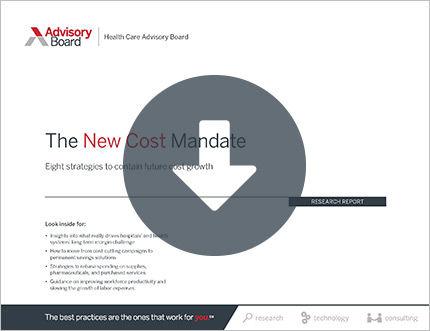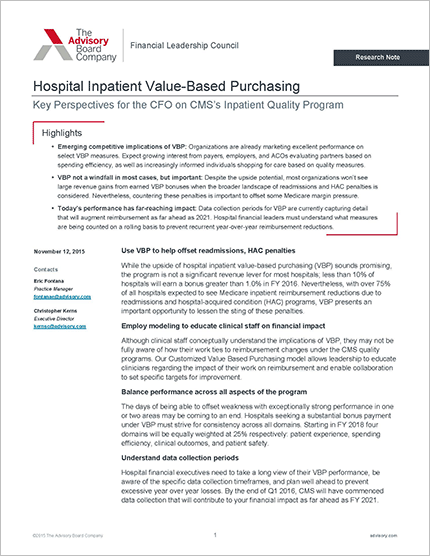Auto logout in seconds.
Continue LogoutThree years into a five-year hospital payment pilot, Maryland hospitals were meeting or exceeding the model's goals for cost reduction and quality improvement, according to a new report released by the Maryland Department of Health.
Upcoming webconference: Learn how to deliver a best-in-class patient financial experience
How the model works
For nearly 40 years, Maryland had a unique payment system for nearly 40 years under which all payers reimbursed hospitals at the same rates, which were set by a state commission.
But facing rising health expenditures and high readmission rates, CMS and Maryland in 2014 reached a five-year deal that went even further: Under the setup, all payers in the state set annual global budgets for hospitals to cover both inpatient and outpatient care. The idea was that the fixed, predictable revenues would give hospitals flexibility to invest in care improvements and make care more valuable for patients and payers.
The "all-payer" program was voluntary, but within six months, every hospital in the state signed up to scrap fee-for-service reimbursement. Under the pilot:
- Annual hospital revenue growth must be capped at 3.58%;
- Hospitals must achieve at least $330 million in Medicare per-beneficiary total hospital cost savings after five years;
- Hospital payments must move away from volume-based payment;
- Maryland at the end of 2016 had to submit a proposal to expand the plan beyond hospitals and limit growth in hospital and non-hospital Medicare spending;
- Medicare 30-day all-cause readmissions must be at or below the national average;
- The rate of potentially avoidable hospital-acquired conditions must be reduced by 30%; and
- Total Medicare spending per beneficiary growth must be less than certain national rates.
Progress report
The new report covers the first three years of the program, 2014 through 2016. During that period:
- Medicare savings in total cost of care were 2.08% below the national average growth rate;
- Maryland hospitals had reduced the gap between state and national Medicare readmissions by 79%, on pace to close the gap by 2019;
- Per-capita hospital spending grew by under 2%, below the 3.58% cap;
- The program achieved $586 million in Medicare hospital expenditure savings, which exceeds the five-year goal; and
- The rate of potentially avoidable hospital-acquired conditions fell by 44%, exceeding the 30% reduction target.
The report did not cover 2017, though Maryland officials said the savings continued last year.
Maryland's system in action
Mercy Medical Center in Baltimore has been described by policymakers as one of the more aggressive facilities at reducing costs, according to Kaiser Health News. CMO Wilma Rowe said about one-third of patients leave the hospital with a prescription medication already in hand, which reduces the risk of a patient returning to the ED, as patients commonly fail to fill follow-up prescriptions.
Separately, Greater Baltimore Medical Center has hired several primary care doctors to monitor about 1,000 patients with diabetes. According to CEO John Chessare, clinicians often visit elderly patients at their homes to stave off a hospital visit.
Comments
John McDonough, a health policy professor at Harvard T.H. Chan School of Public Health, said of the pilot, "It looks like it has very strong results." He added that Maryland's model "is pretty bold and it's pretty thoughtfully done and has generated a huge amount of interest around the country."
Joseph Antos, an economist at the conservative-leaning American Enterprise Institute who sits on Maryland's hospital-payment commission, said, "These are not fake savings." He added, "It didn't happen instantaneously. It's taken this number of years to achieve the kinds of savings that you see" for 2016 and thereafter.
Separately, Joshua Sharfstein, former Maryland health secretary who shepherded the pilot to approval, said, "There is a range of responses. Some hospitals have been able to do more than others." He added, "Change in health care is notoriously slow" (Hancock, Kaiser Health News, 3/19; Eichensehr, Baltimore Business Journal, 3/16; Maryland Department of Health report, 3/2018).
Next, learn how to deliver a best-in-class patient financial experience
Join us for a webconference on May 9 to learn how to transform your revenue cycle to meet your patients' financial expectations, increase revenue, and maintain loyalty. Secure your spot for the webconference today.
Don't miss out on the latest Advisory Board insights
Create your free account to access 1 resource, including the latest research and webinars.
Want access without creating an account?
You have 1 free members-only resource remaining this month.
1 free members-only resources remaining
1 free members-only resources remaining
You've reached your limit of free insights
Become a member to access all of Advisory Board's resources, events, and experts
Never miss out on the latest innovative health care content tailored to you.
Benefits include:
You've reached your limit of free insights
Become a member to access all of Advisory Board's resources, events, and experts
Never miss out on the latest innovative health care content tailored to you.
Benefits include:
This content is available through your Curated Research partnership with Advisory Board. Click on ‘view this resource’ to read the full piece
Email ask@advisory.com to learn more
Click on ‘Become a Member’ to learn about the benefits of a Full-Access partnership with Advisory Board
Never miss out on the latest innovative health care content tailored to you.
Benefits Include:
This is for members only. Learn more.
Click on ‘Become a Member’ to learn about the benefits of a Full-Access partnership with Advisory Board
Never miss out on the latest innovative health care content tailored to you.


